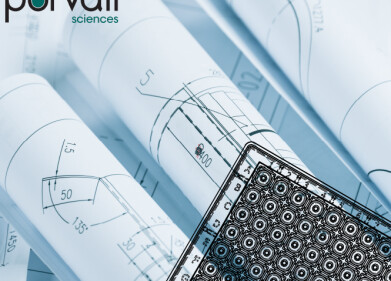Laboratory Products
Can You Feel Through Prosthetic Limbs?
May 17 2018
From cancerous tumours to severe trauma, limb amputations can be necessary for a host of different reasons. Now, researchers from the University of Illinois are claiming that losing a limb doesn't have to mean losing all sense of touch. Using a purpose-built control algorithm, the team has successfully used a mild electrical feedback current to stimulate nerves and offer prosthetics users a constant sensation of touch.
"We're giving sensation back to someone who's lost their hand. The idea is that we no longer want the prosthetic hand to feel like a tool, we want it to feel like an extension of the body," comments Aadeel Akhtar, a student in the University of Illinois neuroscience program and lead author of a paper published in the journal Science Robotics. Akhtar is also CEO of PSYONIC, a next-generation start-up company founded to "redefine what it means to be human through advances in biointegrated technologies."
A steady sensory experience
In the past, attempts to link sensation to prosthetic limbs have been laced with difficulties. One of the biggest issues is reliable feedback, with electrodes gradually peeling off over time. This can cause a build-up of current and spark a painful electric shock or cause the wearer to lose sensation altogether. The use of a control algorithm works to overcome these hurdles and offer prosthetic users a steady sensory experience. The internal monitor constantly tracks feedback and automatically adjusts levels, even when the wearer is sweating or losing skin contact with the electrodes.
The new technology has been tested on a pair of patient volunteers who were asked to perform a handful of low-intensity everyday tasks such as climbing stairs, running on an elliptical machine and hammering a nail into a board. Without the use of the current controller both users lost sensation by the end of the activity. However, when we had the control algorithm on, after the activity they said they could still feel the sensation just fine," Akhtar explains.
An "extension of the body"
Now, PSYONIC is working to miniaturise the electric feedback model so that it can be installed inside a prosthetic arm. Eventually, the goal is to create a prosthetic limb so sensitive that it can relay subtle sensations.
"We want our users to be able to reliably feel and hold things as delicate as a child's hand," asserts Akhtar. "This is a step toward making a prosthetic hand that becomes an extension of the body rather than just being another tool."
Technology breakthroughs are continually revolutionising the life sciences sphere. Fuelled by demand for new reference materials, 'New Confidence in Fluorescence - Developments in Instrument Qualification' explores the resources currently available to technicians.
Digital Edition
ILM 49.5 July
July 2024
Chromatography Articles - Understanding PFAS: Analysis and Implications Mass Spectrometry & Spectroscopy Articles - MS detection of Alzheimer’s blood-based biomarkers LIMS - Essent...
View all digital editions
Events
ACS National Meeting - Fall 2024
Aug 18 2024 Denver, CO, USA
Aug 25 2024 Copenhagen, Denmark
Aug 28 2024 Phnom Penh, Cambodia
Sep 04 2024 Chiba, Tokyo, Japan
Sep 04 2024 University of Warwick, Coventry, UK


















